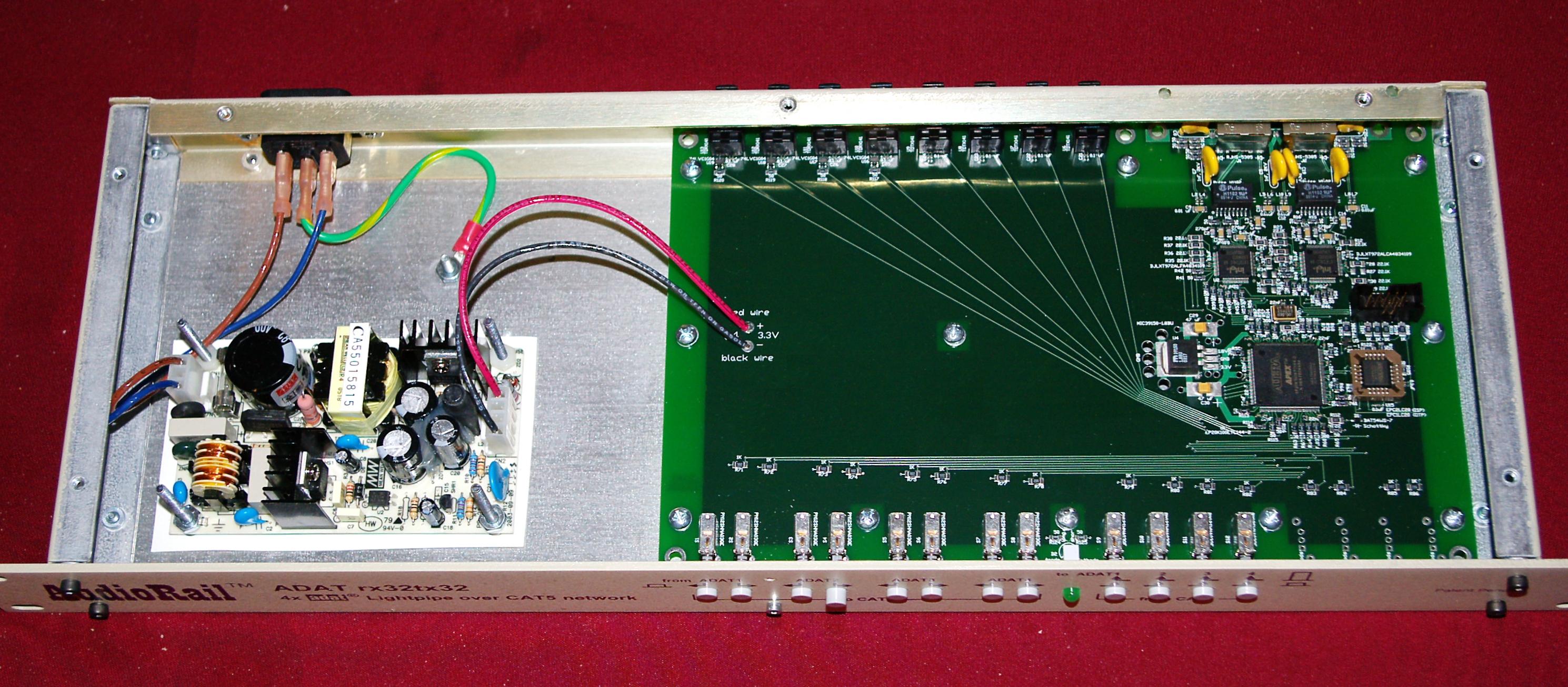
This applies to all units shipped prior to 6/15/2007. The symptom of this failure is that all four LEDs on the rear of the failing unit will go out for at least a noticeable fraction of a second (typical minimum of 200ms), if not more, while the front panel LED may flicker slightly (this may not be noticeable, as only about 30 microseconds loss of contact is required to fail). When this happens, you will get a complete dropout from all channels during that time, while the AudioRail unit goes through its power-on reset. In some instances, 0 dBFS noise will occur as the entire digital audio installation recovers and resyncs to the sample clocks. The non-failing AudioRail unit(s) at the other end of the Cat5 cable(s) will have only the two inner rear LEDs go out, signifying a loss of receive signal from the adjacent failing unit.
The inside of an AudioRail unit, showing the connector, is shown here:
The remedy is to simply solder the wires down to the connector pins:
This is an easy soldering task for most people in the professional audio industry. However, if you do not feel comfortable doing this rework, please contact us to arrange to have your units shipped back so that we can do it for you.
It is essential that this work be done to all AudioRail units. Note that simply pulling out and reinserting the existing power connector will guarantee reliable operation for at least several months, if not more. But this should not be considered a permanent remedy. Soldering the wires down is the permanent remedy.
Please do NOT remove the power supply. There are noise immunity and safety issues having to do with how it is mounted. If you opt to do the soldering yourself, please just solder the wires to the connector pins as shown in the photographs above.
Note that the high voltage connector is inherently not vulnerable to this problem, because of the high voltage, which just blasts through any developing oxidation. The high voltage connector should not be reworked.
We apologize for this situation, and for any failures that you may have encountered. As you know, we tried in all areas to make AudioRail reliable through simplicity of design and conservative engineering. One of our selling points was that we had "no cable harnesses besides that connecting to the power supply." Unfortunately, one of those cable harnesses connected to the power supply has turned out to be unreliable, and has caused audio dropouts in a number of broadcast, live recording, and live sound productions in various places. This has been an embarrassment to both our customers and us. It has taken nearly two years for us to find the problem (first reported by a customer in September 2005), because transporting failed units almost always temporarily fixed the problem, as well as the simple act of removing the top cover, which the red and black wires are normally pressed up against. The actual contact area can be less than 0.5mm square, and evidence of the problem cannot be seen without a microscope and proper lighting. In some instances the tin plating is sparse to begin with, and is getting scraped off on the first insertion of the connector.